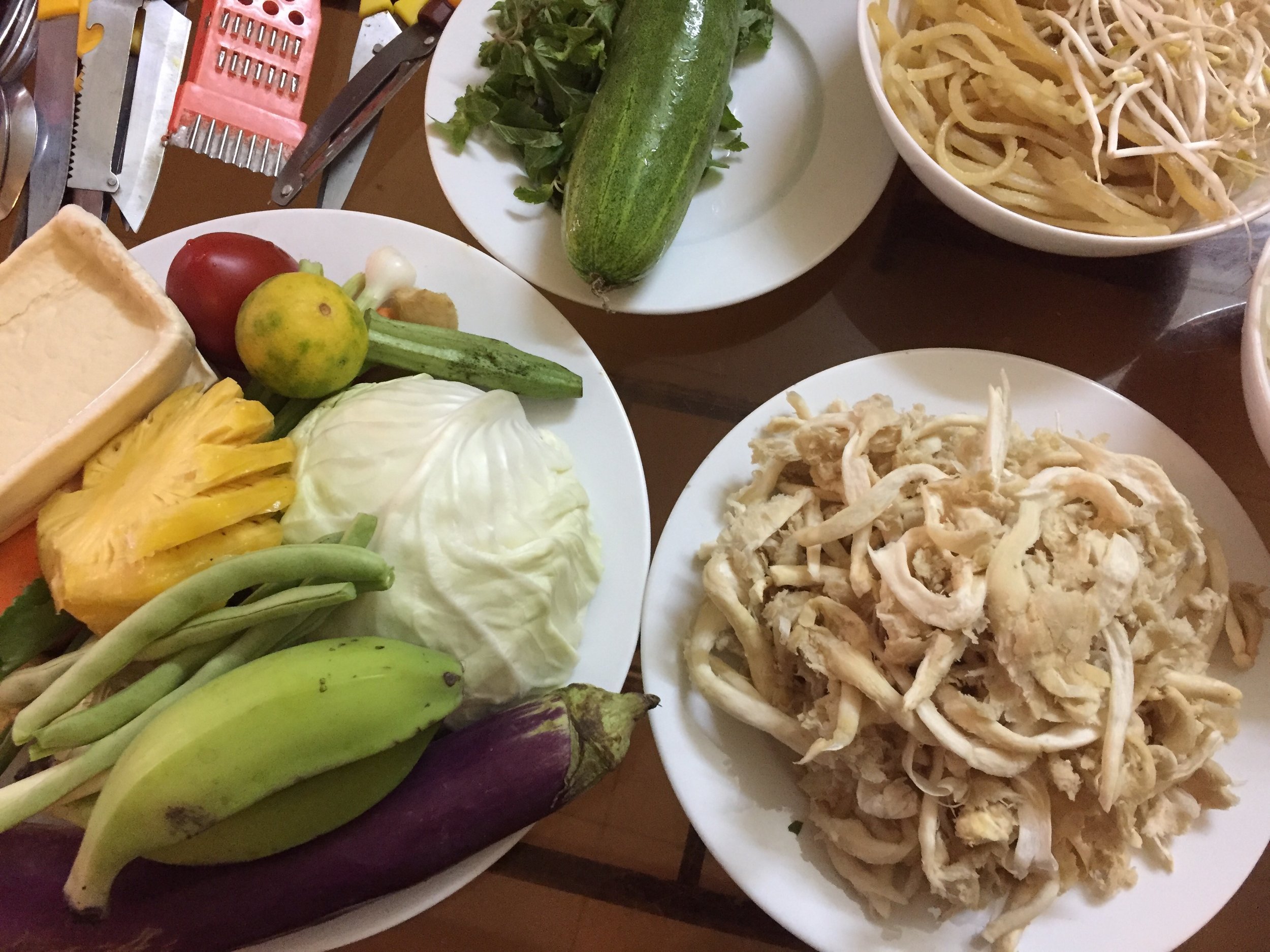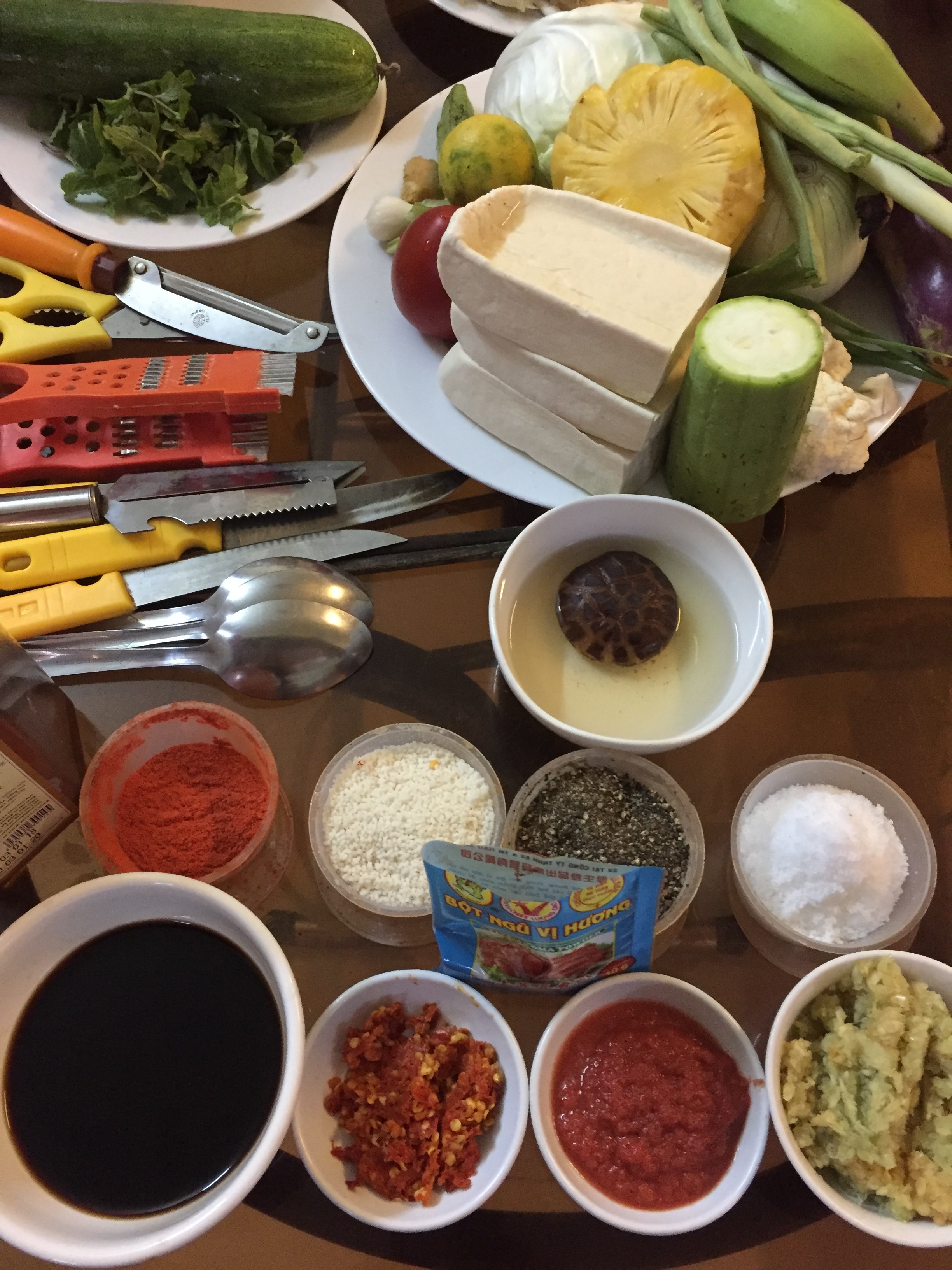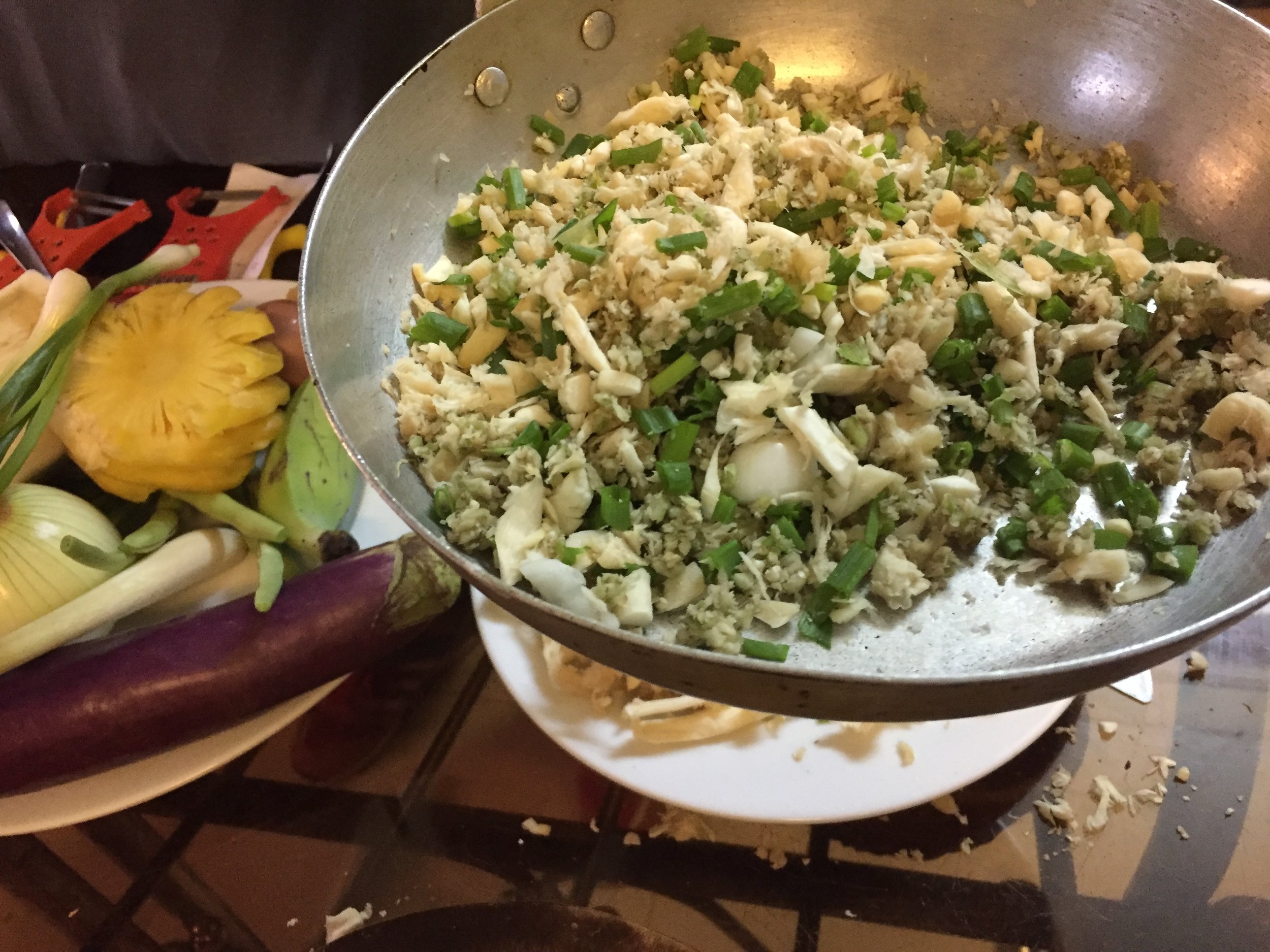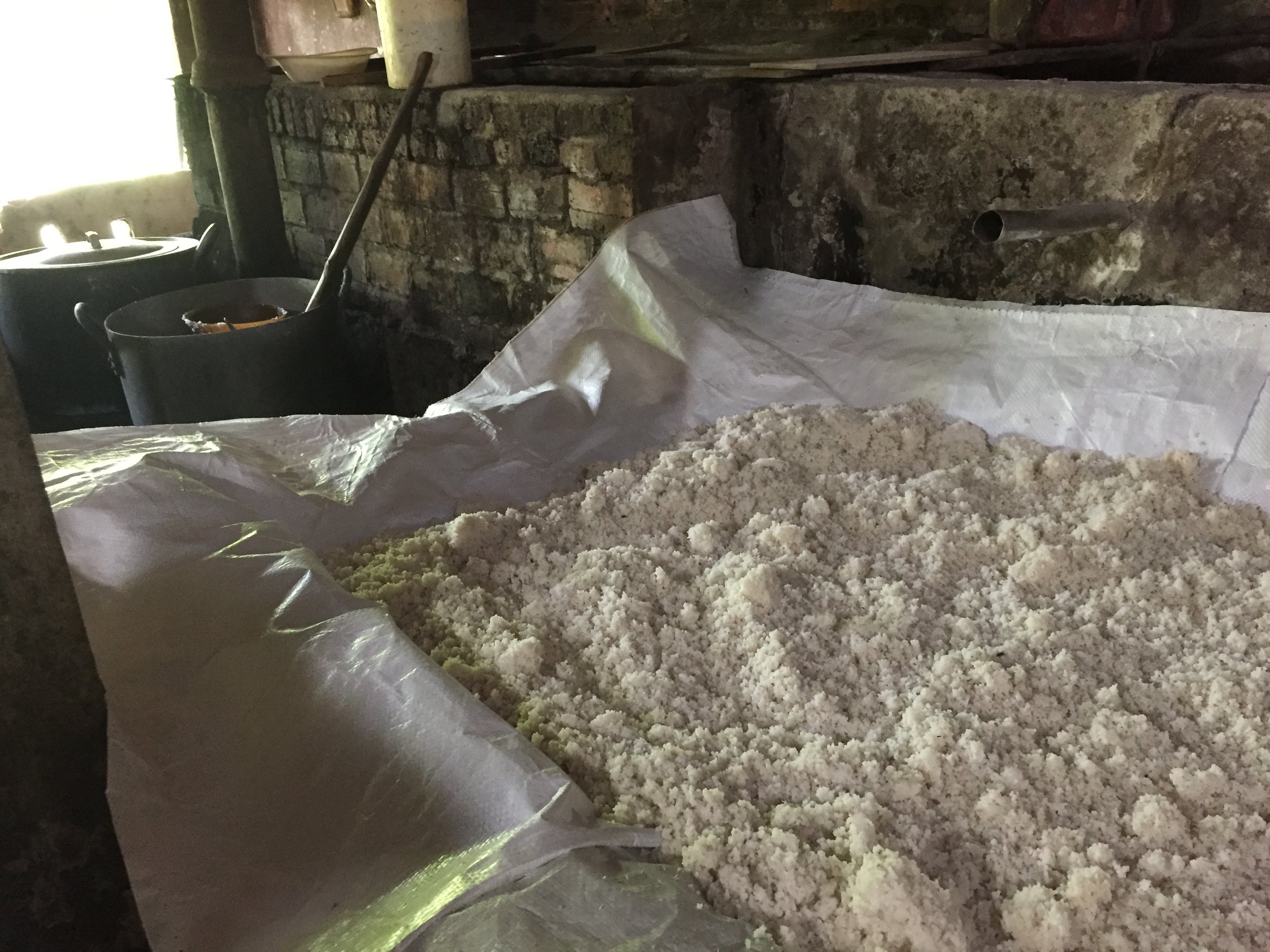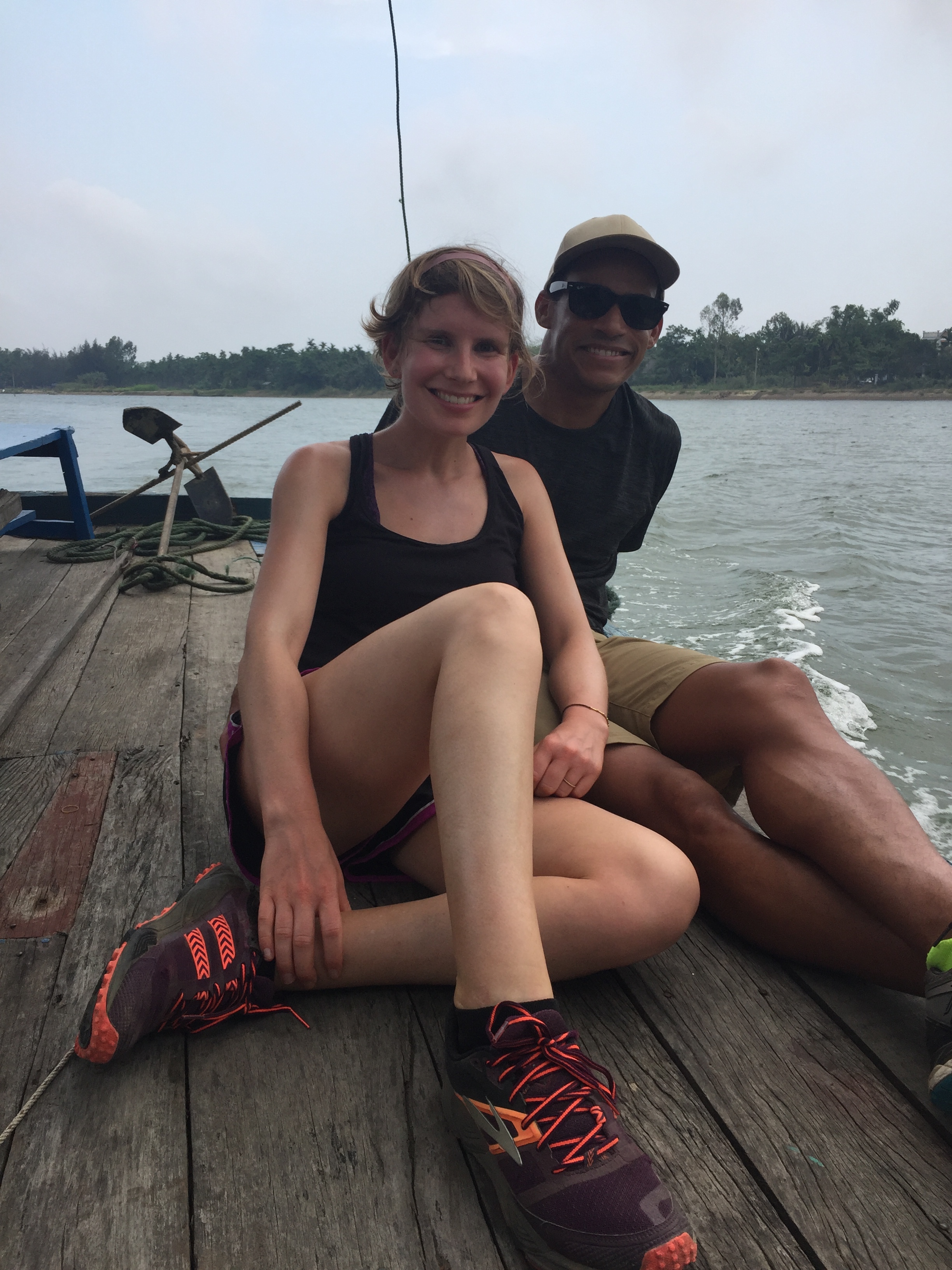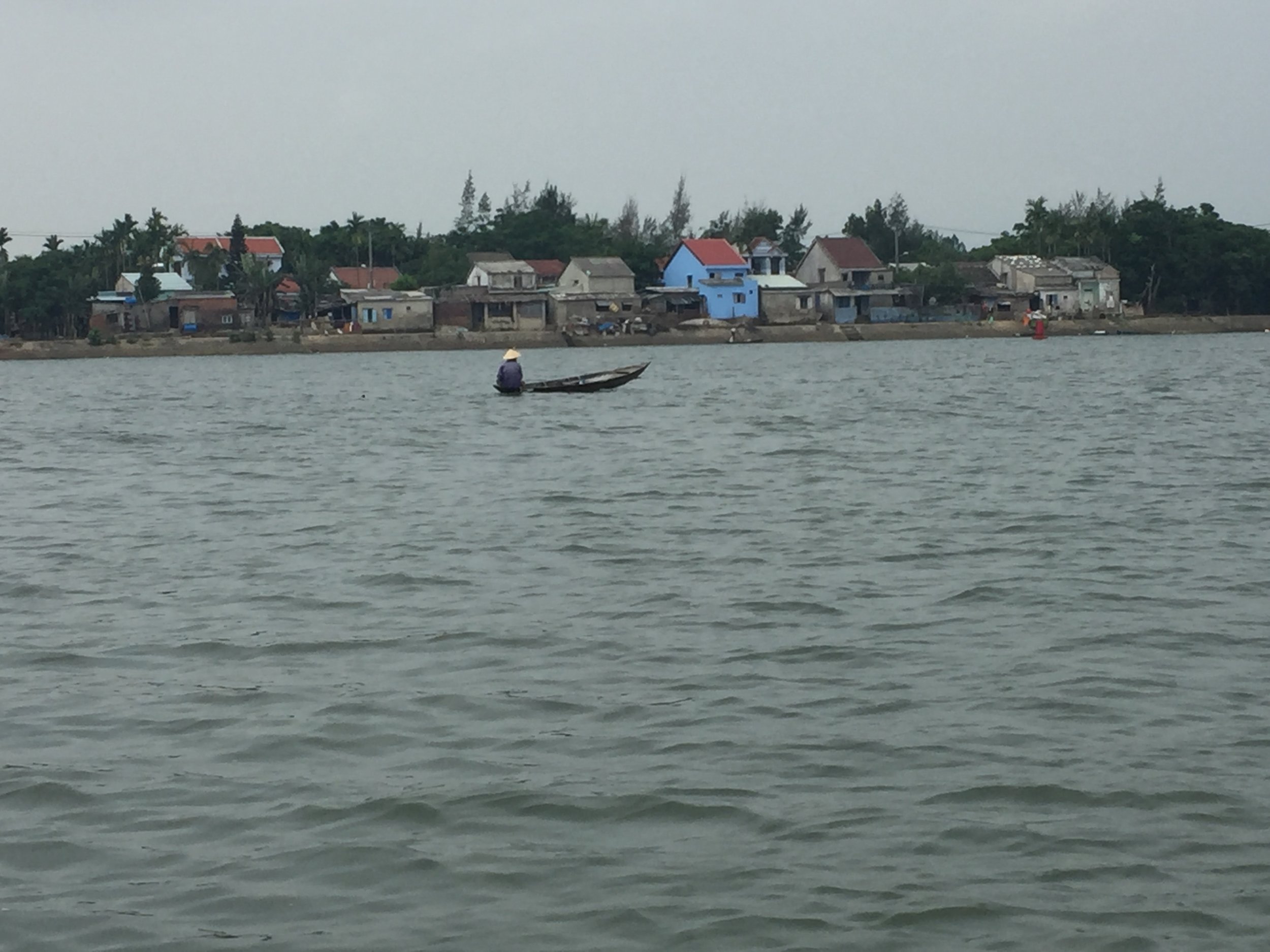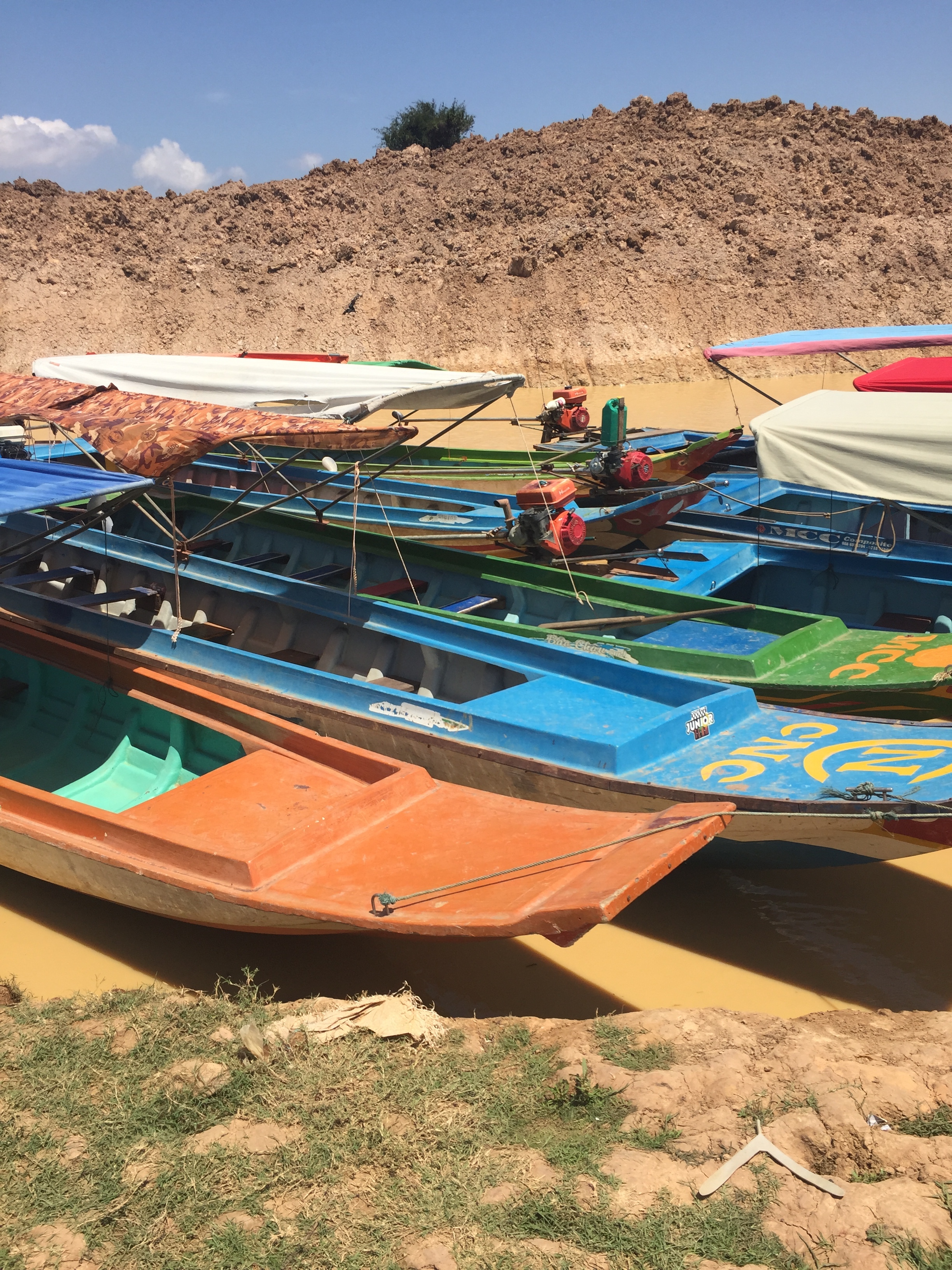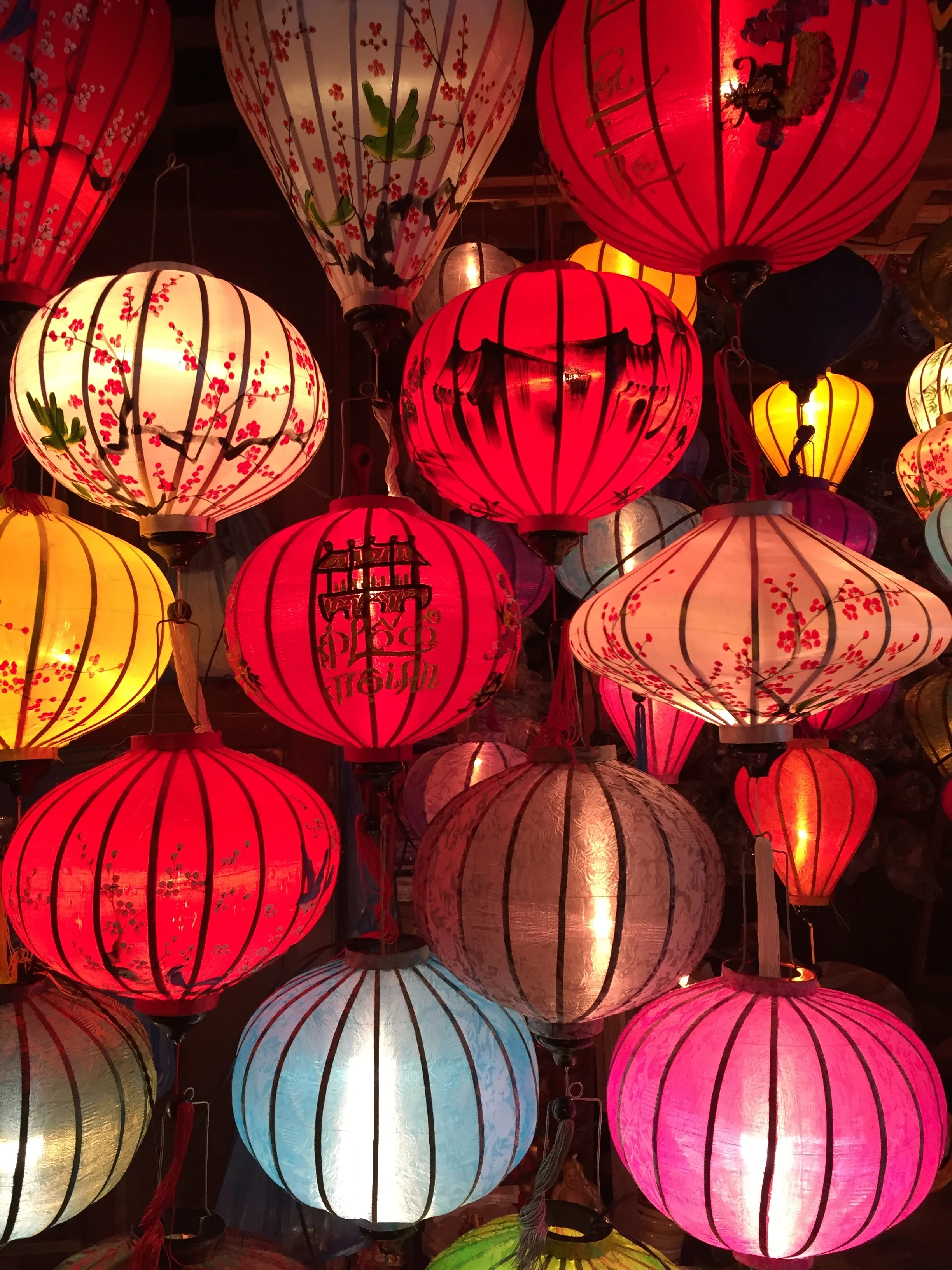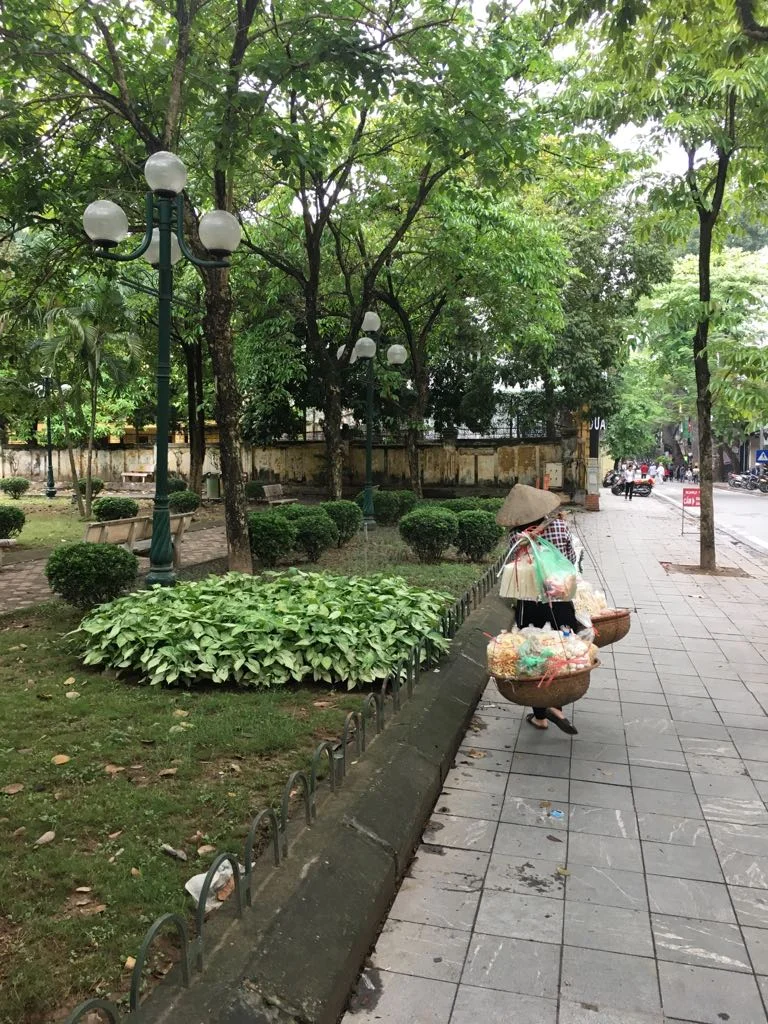Hoi An: Biking and Cooking
Hoi An's allure is intrinsically tied to a feeling of stepping back in time. Cars and motorbikes are not permitted in the center of the city, which imparts an even further small town feel. Back alleyways connect homes and cafes, providing only a glimpse into the reality of living on the mainland.
The setting feels enchanting, along the water with lights that illuminate the evening. It's a fascinating juxtaposition of old meets new.
There's plenty to keep engaged in this ancient place. To gain a better understanding of traditional life, I attacked it twofold: by cooking and by biking. To learn about the extensive food culture, I took and cooking class and to delve into the realities of life along the river, we took a bike tour across the countryside. The insight I gained from both experiences helped paint a better picture of life in Hoi An, then and now.
The food history in Hoi An is extensive since it encompasses influences by former traders in the port city, including the Japanese, Chinese, French and Portuguese. Today, cooking classes are pretty ubiquitous in Hoi An and thus there's a slew to choose from. There's a range of professionally and highly acclaimed classes and schools. I chose to do a more informal class that received positive reviews: Minh Hien Vegetarian Restaurant. Our favorite restaurant in Hoi An was a small vegetarian eatery directly across from our airbnb, Am Vegetarian Restaurant. We went more often than not for dinner and I was eager to learn how to replicate some of the dishes.
I've been able to partake in a few more formal cooking classes aboard, so I really appreciated the casual restaurant setting. No need to sign up beforehand, you simply show up and pick a dish on the menu to learn how to make. There were five other people in the class, so we made a total of seven dishes and shared everything. Our menu included the Minh Hien Special; Stir Fried Oyster Mushroom with Chili, Ginger, and Lemongrass; Fresh Tofu Overlaid Fried Egg with Mint, Salt, Pepper, and Lime; Hoi An Special Noodle: Cao Lao; Braised Eggplant with Sauce in Claypot; Sweet and Sour Tofu; and my choice: Vietnamese Noodle Soup: Pho.
The class opened with Mr. Minh Hien himself giving us an introduction to the tools and spices.
After, I ended up buying a few of these orange graters at the market to try to emulate the thinly sliced vegetables at home. In Vietnam, they're used for most dishes to create matchstick size cuts.
The spices included five spice, paprika, fresh garlic, fresh ginger, fresh chili, chili powder, fresh mushroom powder (can be substituted for a crushed bouillon cube), ketchup, soy sauce, crushed peanuts, salt and pepper.
My takeaway from the class was that the key to vegetarian cooking in Vietnam is the mushroom sauce. The complexity and depth of flavor was added to nearly every dish.
It's made of minced oyster mushrooms (shown above), rehydrated shiitake mushrooms, honey, soy sauce, salt, paprika, and garlic. Heavy handed on the salt. Personally, my favorite dish was the Minh Hien Special, which was surprisingly made with an entire green banana, including the peel.
I learned that chop sticks are used to stir fry, no spatula needed.
Another unique dish was the cao lao, made from chewy udon-like rice noodles.
The delicacy is unique in Hoi An since the noodles can only be cooked using water from well-hidden ancient Cham wells. At the market, hand cut cao lao noodles could be seen laid out to dry.
Mostly, I loved the idea of learning how to make pho in Vietnam. Even if untraditional, without using meat.
The meal was delicious. From here on in, I'm going to try to pursue less structured cooking classes on the road. This particular three hour class felt personalized and I learned innovative cooking techniques I don't think I would have in a more polished setting.
In addition to the cooking class, the bike tour was a highlight for sure. We booked through the highly recommended Heaven and Earth Bike Tours. It felt like a true window into the day-to-day of a Vietnamese fishing village. We learned traditional crafts, boating techniques, and how life has sustained on the small islands off of Hoi An for thousands of years.
We crossed over to two local islands over the Song Thu river delta. We continued to bike through the lush countryside, through rice paddies.
Clearly, a sharp contrast to the congested streets of Hanoi.
We biked over floating bridges to reach the other island. The bridge felt unstable as we peddled over boards held together by bamboo that swayed with any movement. Sure enough, the bridge held strong, even carrying the motorbikes that wizzed by us.
Despite some unsteady moments, the biking was far from strenuous. The leisurely pace amounted to five and a half miles roundtrip. If fact, Will said he would have liked to bike more.
But the tour was informative. Thus far, I'd like to think we're doing a healthy mix of museums and learning about the culture of places on our own accord, primarily by chatting with locals. Yet we often find we'll visit a city and yearn for more historical context. Will perpetually has a slew of buildings, sites, and places cued on his phone to look up later. The Heaven and Earth Bike Tour provided us with an acute perspective of the middle of the country.
We made stops along the way to learn from various craft workshops. First was what appeared to be a shipyard. Wooden river boats are still the primary source of transport along the river, and the boats were in demand. It's tough not be to impresssed by the craftsmanship.
We also learned about the traditional Vietnamese basket boats, or thung chai. They date back to the French colonial era when the French began levying taxes, including owning boats. Given that many of the local fisherman couldn't afford to the pay the obscene taxes on boats, they invented thung chai, which they argued was a mere basket.
The intricately made vessels are still widely used around central Vietnam. They're made by hammering strips of bamboo, then coating the basket in a waterproof resin.
Perhaps most memorable was when we were able to test them out ourselves. Trust me when I say, it's more challenging that it appears.
You have to balance on the front of the basket and then proceed to paddle in a lateral figure eight motion. It was easy, until I completely lost control and gracefully floated into the bank.
After we got a tutorial on how to make the colorful straw sleeping mats, specifically used in Hoi An. The thin handmade mats are made from dried reeds. The straw mats are believed to help keep cool while sleeping in tropical climates. Although it's considered a straight forward craft, the teamwork is admirable to watch as one person controls the shuttle and the other the loom. The craft is passed down to generations.
A surprise stop was when we saw how rice wine was distilled. The process begins with cooking sticky rice that's harvested locally. Then, the rice is spread to cool and yeast is evenly distributed, before mixing the concoction by hand.
The fragrant rice is transferred to clay pots where it's fermented for roughly three days. Water is added to the cooking process which ultimately becomes potent wine. The scent was strong enough, but we were then were treated to a tasting. We tried four different kinds.
It felt as if we ingested anything harmful, the rice wine wiped everything out. When I asked Will to describe it he said, "abrasive" and "oven cleaner." He added, "It was pretty good, though."
Fortunately, we only biked only a short distance to lunch from there. We were welcomed into the home of a Vietnamese family and learned some of their traditions around mealtime.
The fish was freshly caught from the ocean, served along side the popular green, morning glory.. It was delicious. After my cooking class, I started noticing some commonalities in the sweet and sour sauce.
En route home, we floated down the Song Thu river delta via the locally constructed wooden boats. The river runs along central Vietnam before ultimately reaching the South China Sea.
We passed large rigged nets that are suspended by four bamboo poles. A sizable lantern is turned on each night to attract fish, and the fishermen lower the nets into the river for a few hours. The technique dates back generations. Less than an hour boat ride back to Hoi An, it felt lightyears away.
One of our two tour guides grew up on the first smaller island and imparted a deep understanding of the lifestyle. She explained many traditional jobs such as basket and mat weaving are not being passed down, since the younger generation doesn't share the same interest in continuing the trade. We told her there are places in the States that share the same conundrum among tradesmen.
The influx of technology replaces traditions that have been mainstays for hundreds of years. There's a certain sadness to the evolving way of life. In Vietnam, some craftsmen can attain government subsidies to pay apprentices to learn their craft, but since the business is so integral to village life it's not tremendously profitable.
Although tours can have a negative connotation, in this case, it did feel that we escaped the tourist route, if only for the day.
On a personal note, out of everything we learned, perhaps the most gratifying was my pineapple cutting tutorial. I've become quite accustomed to buying a freshly cut pineapple on the street. It's sweet and refreshing and less than a dollar. One morning, I bought an entire pineapple and asked our homestay hosts to teach me how to cut it. They graciously, and patiently, showed me a with detailed instructions. After cutting off the skin, you diagonally follow the spikes. As a beginner, I cut two spikes at a time, trying not rotate the fruit too much.
I wasn't as graceful, but least now I know how to practice. The consensus was that it was delicious nonetheless.
Hoi An is vastly different than the flanking Southern and Northern cities in Vietnam. The accents, the food, the way of life. Our time in Hoi An helped put things in perspective. My perception of Vietnam is so intrinsically tied with the war. But learning about local traditions through cooking and exploring helped me understand the vast Vietnamese culture. We only brushed the surface, but I left feeling inspired and eager to learn more.







